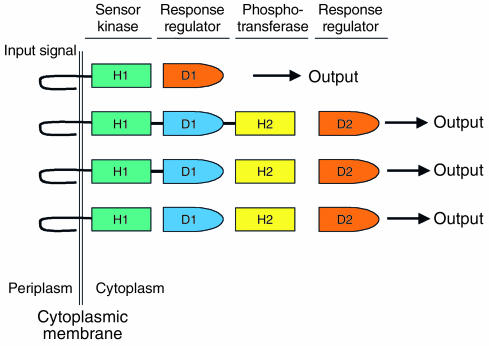Figure 3.
Modular organization of two-component signal transduction cascades in bacteria. Bacteria typically detect changes in their environment using two-component phosphorelay systems. Information is detected by the first protein component, which is usually a membrane-spanning sensor-histidine kinase (green). Phosphate is transferred to the response regulator protein that is responsible for controlling the output (red). The sensor protein is autophosphorylated on a conserved histidine residue (H1). Phosphate is transferred to a conserved aspartate residue (D1) on the response regulator. Two-component systems often include additional response regulator and phosphotransferase proteins (blue and yellow domains, respectively) that contain conserved aspartate and histidine residues. The modular domain organization of the two-component circuits can vary, as these circuits can be composed of two, three, or four protein partners.

